How Much Does It Cost to Rent a Sewer Camera?
If you're dealing with a blocked drain, sewer smell, or slow drainage, a sewer inspection camera can save you time and money by showing you exactly what’s going on underground — no digging, no guessing.
But when you're not a plumber, the first question is simple:
Should I rent one? And how much does it actually cost to rent a sewer camera?
Let’s break down how much it costs, the key factors that affect rental prices, and whether buying a camera is a smarter choice!
Why Rent a Sewer Camera?
Choosing to rent a sewer camera to inspect pipe problems has the following main reasons:
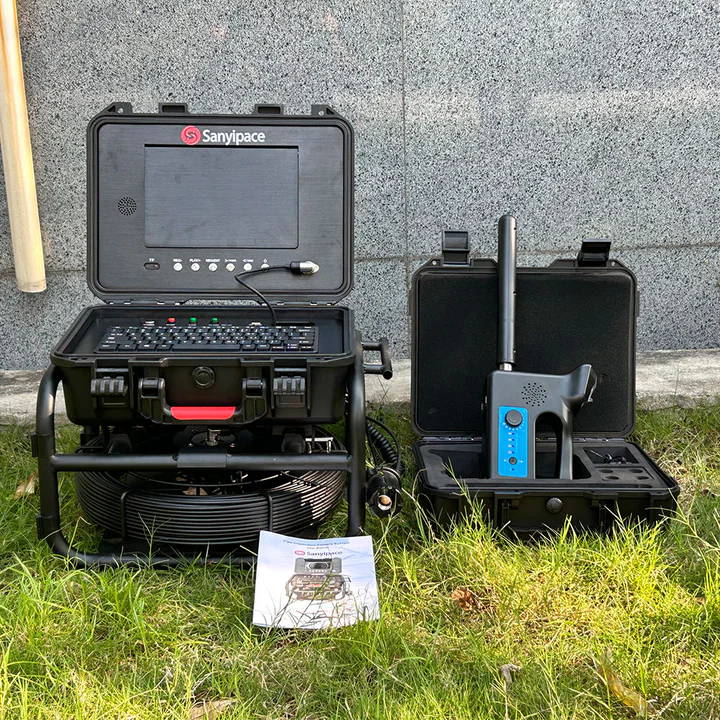
✅ 1. Accurately Locate the Problem
✅ 2. Save Time and Repair Costs
✅ 3. Non-Invasive Inspection Method
✅ 4. Preventative Maintenance
✅ 5. Pre-Purchase or Pre-Renovation Inspection
✅ 6. Support for Insurance Claims or Professional Reports
The video footage can serve as evidence for repairs or insurance claims. Many professional service providers can offer inspection reports, which help in communication with insurance companies or landlords.
Why Rent Instead of Buy?
For users who only need a one-time inspection, renting a sewer camera is the more cost-effective option. After all, a high-end sewer camera can cost several thousand dollars, and some commercial-grade models even exceed $10,000. So if you're only going to use it once, there's no need to invest in buying one.
That said, not all quality cameras are that expensive. Many durable and user-friendly models are priced between $500 and $3,000.
So if you expect to use it multiple times, purchasing a camera may actually make more financial sense in the long run.
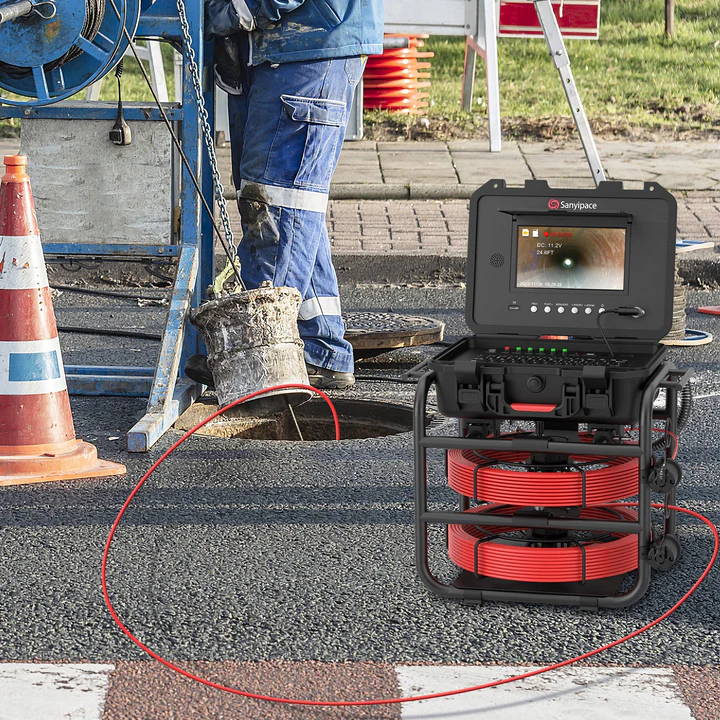
How Much Does It Cost to Rent a Sewer Camera?
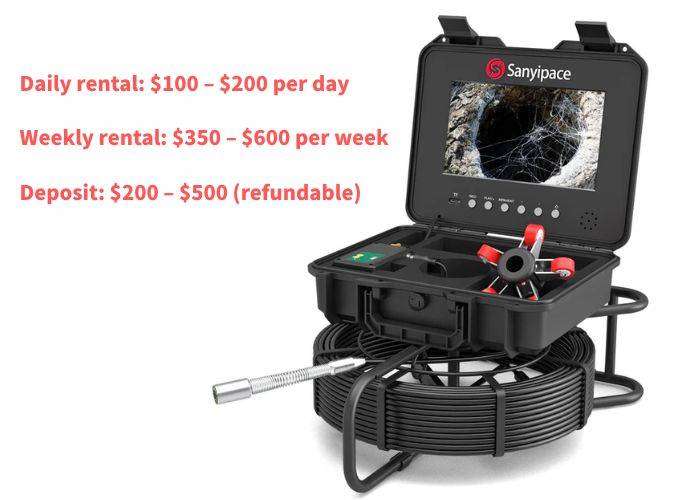
Rental costs vary depending on your location, the type of equipment, and how long you need it. Here’s a general price range:
- Daily rental: $100 – $200 per day
- Weekly rental: $350 – $600 per week
- Deposit: $200 – $500 (refundable)
In general, the more advanced the features, the higher the rental cost. For example:
- Models with built-in 512 Hz locators, self-leveling heads, or video recording capabilities tend to be more expensive.
- Most basic sewer camera rentals are around $150 per day, but models with longer cables or additional features can cost significantly more.
So while renting may seem affordable at first, the cost can add up quickly—especially if you need the equipment for more than a day or two. In such cases, purchasing might be a more cost-effective option in the long run.
Buying vs. Renting a Sewer Camera — Which Is More Cost-Effective?
Here’s the reality: If you're only using it once, renting makes more sense. But if you frequently deal with plumbing issues, work in the industry, or just want long-term peace of mind, buying your sewer camera could be the smarter investment.
🔧Pro Tip: Some mid-range models range in price from $500-2000 and offer features like video recording, self-adjusting, LED lighting, and cable ranges up to 100 feet - perfect for most residential jobs. If you're still deciding what's right for you, check out our guide on [Rent or Buy a Sewer Camera] to weigh the pros and cons.
If you're looking to buy a sewer camera, browse the products on the Sanyipace website. We have a wide range of sewer cameras of different types, prices, and features for you to choose from!
What Should I Pay Attention to When Renting a Sewer Camera?
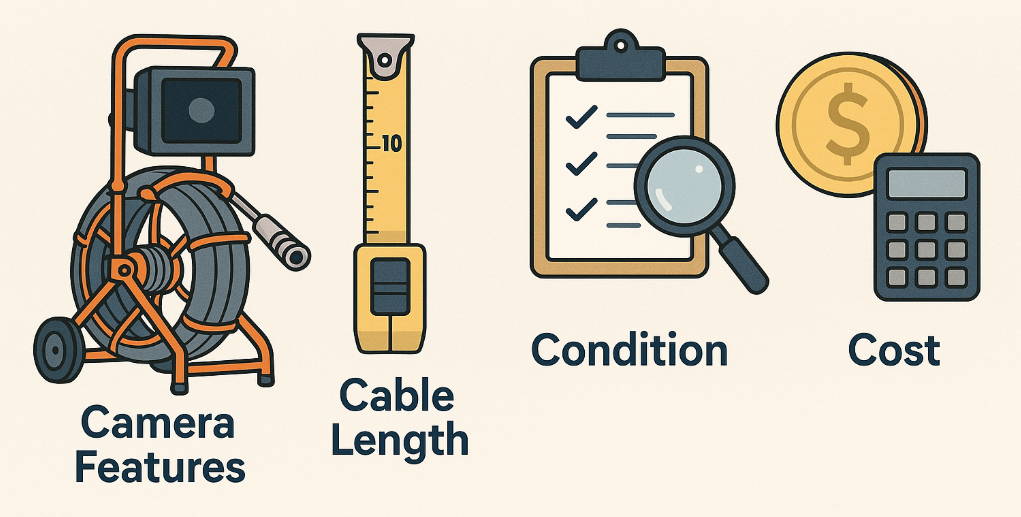
When choosing to rent a sewer camera, you need to consider the following factors:
🔧 1. Camera Specifications
Cable Length: Ensure the cable is long enough for your needs—most residential jobs need 100–200 feet.
Sewer Camera Head Size: Should fit your pipe diameter. Common sizes range from 1 to 2 inches for household drains.
Self-Leveling Camera: Keeps the image upright, which makes diagnosis easier.
Lighting: Look for bright, adjustable LED lights for clear visibility inside dark pipes.
Recording Option: If you need to document the inspection, choose a model with video recording and an SD card or USB storage.
💻 2. Monitor Quality
Screen Size and Clarity: A larger, high-resolution monitor (7” or more) helps spot details clearly.
Waterproof and Rugged Design: Important for durability, especially in wet or outdoor conditions.
🔋 3. Power and Battery Life
- Check how the unit is powered (battery vs. plug-in).
- For battery units, confirm battery life and whether an extra battery is provided.
📦 4. Condition and Support
Inspect for Damage: Check for wear, frayed cables, or foggy lenses.
Test Before Use: Ask for a demo or test it yourself to make sure it's working properly.
Rental Support: Choose a rental company that provides instructions, tech support, and possibly quick replacements.
📜 5. Rental Terms
Daily vs. Weekly Rates: Compare cost performance.
Deposit and Late Fees: Know upfront what’s refundable and what penalties apply.
Insurance or Damage Waiver: Consider this if you're concerned about equipment damage.
🧰 6. Skill Level & Usage
Ease of Use: Some models are plug-and-play, while others may require training.
Training Provided: Some rental shops offer a brief training or manual.
Pipeline Type: Ensure the drain camera is suitable for the type of pipe (PVC, cast iron, clay, etc.).
🚫 7. Tips
- Don’t force the cable—it could break or damage the pipe.
- Don’t use in extremely hot or chemically aggressive environments unless rated for it.
- Don’t submerge non-waterproof parts.
Summary
To summarize, renting a sewer camera can cost between $100 and $200 per day. While rental is ideal for occasional use, frequent inspections can quickly add up—so if you’re a contractor or a homeowner dealing with recurring plumbing issues, buying a sewer camera of your own might be a more cost-effective long-term solution.
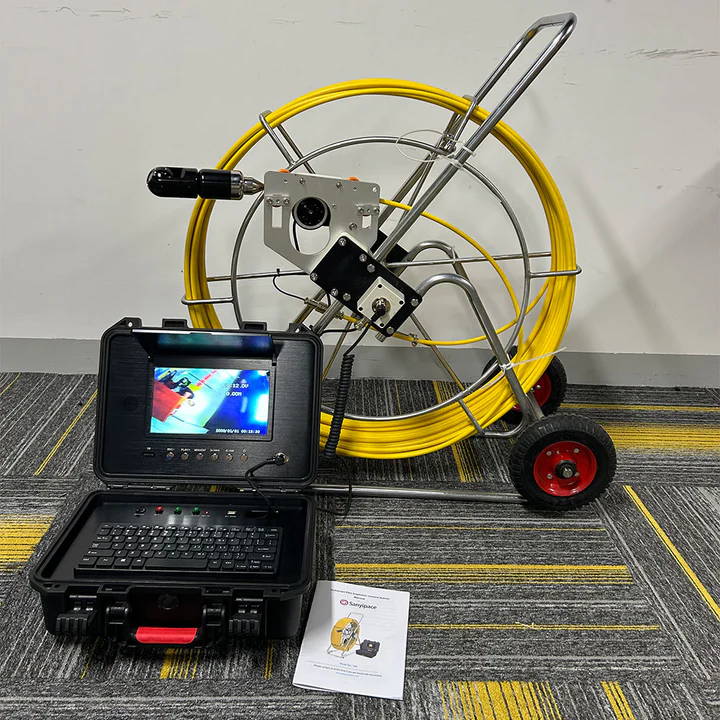
Frequently Asked Questions
- Help locate blockages and damage without digging
- Save money on guesswork and unnecessary repairs
- Are essential for pre-purchase home inspections
- Let DIYers see the problem directly before calling a plumber









